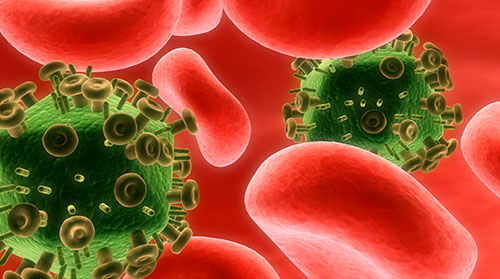From time to time, stories appear in the media about possible cases of an HIV cure. How should a reader assess stories like this? What should you look for?
The key thing to remember is that it’s currently impossible to know whether someone has been cured until they have been off antiretroviral therapy (ART) for a substantial period of time – at least a couple of years. Some researchers have proposed that five years may be the appropriate cut-off, at which point there is a 50% chance that the person is truly cured.

Above: A 3d Rendered Illustration of the HIV Virus
There have been several high-profile cases in recent years that raised people’s hopes for a cure, most notably the Mississippi child. This HIV-positive child stopped taking antiretroviral therapy and showed no signs of virus after more two years off treatment. Many pronounced the child cured until researchers detected evidence of viral rebound 27 months after the child stopped therapy. This is far longer than the approximately three weeks one might otherwise expect the virus to take to come back. But it’s important to remember that, as with anything we measure in biology, there may be a large range of observations, and any one person may simply be an unusual case.
Another thing to remember is that if an HIV-positive person is taking their medications consistently and correctly, it is likely that their virus will be reduced to what is called “undetectable” levels. This means that tests regularly used in medical care are not sensitive enough to detect the low levels to which the virus has sunk. Most of the time, some more advanced tests, normally used only in scientific studies, can find the virus in the blood. And even if the most sensitive tests showed no evidence of virus in their blood, we know that reservoirs of persistent virus are also present in tissue in certain parts of the body, and these pockets of virus may be much more difficult to detect.
It’s currently impossible to know whether someone has been cured until they have been off antiretroviral therapy (ART) for a substantial period of time.
A credible report of the possibility of a cure will almost certainly make mention of attempts that have been made to measure the HIV reservoir. Measuring the reservoir of HIV that persists while people are taking ART is one of the greatest challenges of HIV research. There are many approaches currently being investigated, and many involve the measurement of the level of HIV DNA in a person. We know, however, that this does not tell us definitively whether a person has been cured.
Ideally, scientists would be able to measure something in the blood or tissues that indicates whether a patient is cured, without having to take the patient off ART.
In 2016 amfAR awarded a grant to a team of researchers who are undertaking a study aimed at discovering such a measure. The researchers will look for indicators in the blood and tissues that predict a longer delay to rebound. If successful, researchers could finally have a tool for gauging the success of potential cure interventions.